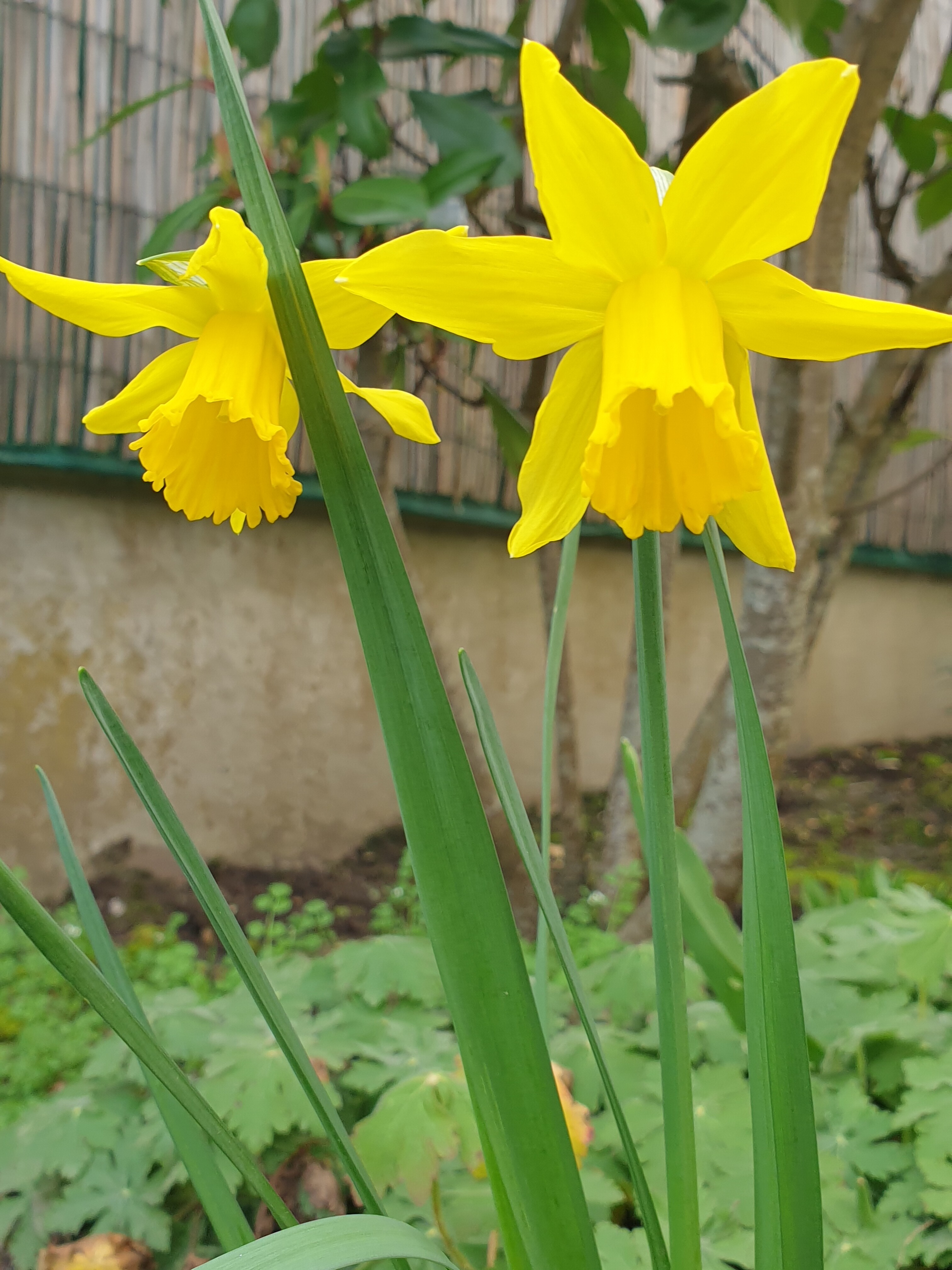Thanks to the former house owner, I am now enjoying the flowers of her labour. It’s our first spring in the house that we bought last July. Since we only moved into the house in July, we have never had the chance to get acquainted with the spring flowers that were planted in this 300m² of garden. I am looking forward to this spring of pretty surprises as we get to discover the different types of plants that were planted by the previous lady of the house.
The weather has been rather unstable since the end of January. At times, it can range from mid-single digits at night to sunny, low teens of up to 14°C in the day time. Other times, like the past few days, the temperature ranges from -2°C at night to greyish sky of 10°C in the day time. The occasional overnight frost makes one hesitate to say that the spring is here. Nevertheless, we know that spring is ALMOST here, especially after viewing the visual delights that are sprinkled around the garden.
Towards the end of January, I started noticing several clumps of basal long, narrow flat green leaves sprouting out of the soil. The clumps were dispersed mainly along the garden paths. Then, I noted the emergence of slim, pale yellow flower buds, each one on a stem. It was only two weeks ago that plant came to full bloom: bright yellow six-petalled flowers with a trumpet-shaped corona. By using PictureThis, an app that identifies the plant type, I managed to identify the flower, known as trumpet or common daffodil (Fr: Narcisse jaune ou Narcisse trompette).
It was only then that I noticed that common daffodil is indeed VERY COMMON. Perhaps it’s because I can now recognise the flower, and I have it in my garden, I see it everywhere. For instance, I only noticed the row of bright yellow common daffodils planted near the city centre when we drove to the supermarket yesterday.

The snowdrops caught my attention one day, around the time when the common daffodils started blooming. I am using “caught my attention” because the little pure-white bells seemed to just appear overnight. They were not there one day, and then they emerged out of nowhere the following day! Of course, like the common daffodils, the leaves and the stems of the snowdrops must have made their appearance a few weeks before. However, due to their short stature (about 10cm) as compared to the 30cm of common daffodils, they were overlooked.

Another early spring flower is the primrose (fn: primevère acaule). Most of the primroses that are in the garden are the purple ones: five purple petals with orange-yellow centres. These low-growing flowers (about 5cm tall) with their crinkly green leaves are widely spread around the garden, even in the places where they are not supposed to be: cracks between the paving stones of the garden walkway. The other colour of primrose that we have is white—white petals with orange-yellow centres. As of now, there is only a handful in bloom.

Last flower on the list of early spring arrivals in the garden, is the yellow crocus (fn: crocus jaune), a low-growing plant with globet-shaped flowers. So far, we have only see a handful of yellow crocus lying around. We have spotted a purplish one too, known as crocus de naples, standing upright and tall by itself. Perhaps we will see more of this plant as the weather warms up.

I have restarted doing my rounds of the garden, and this is a task that I will look forward to do every day.
When we first moved into the house, I would do that every morning when I did not have to work, in the summer and the fall. Going once or twice around the garden, picking up the fallen hazelnuts and apples, checking on the tomatoes and lettuces, making sure that plants were not dying under my watch, ensuring that I had not missed any new plants that popped out overnight. The rounds stopped when the winter arrived, when I had to leave the house before the sun rose, and often the sun had already set when I returned.
